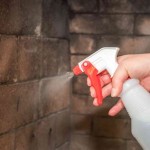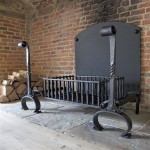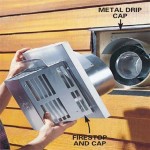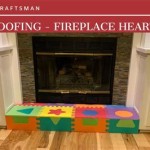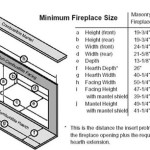```html
The Allure and Practicality of Interior Gas Fireplaces
Interior gas fireplaces have become increasingly popular in modern homes, offering a blend of aesthetic appeal, convenience, and efficiency. Unlike traditional wood-burning fireplaces, gas fireplaces provide a controlled and consistent heat source with minimal maintenance, making them a desirable option for homeowners seeking both ambiance and supplementary heating. This article will explore the various aspects of interior gas fireplaces, including their types, benefits, installation considerations, and safety measures.
A gas fireplace operates by burning natural gas or propane to generate heat and create the visual effect of flames. The fireplace generally consists of a firebox, a burner assembly, a vent or flue system, and a control mechanism. The burner assembly is designed to distribute the gas and create realistic-looking flames, often enhanced by artificial logs or decorative elements like glass beads or stones. The vent or flue system safely expels combustion byproducts, such as carbon dioxide and water vapor, from the home. The control mechanism allows the user to adjust the flame height, heat output, and, in some models, even the fan speed.
The growing demand for gas fireplaces is fueled by their ease of use and the reduced effort required compared to wood-burning alternatives. The ability to start and stop the fire with the flip of a switch or the press of a button eliminates the need for sourcing, storing, and chopping wood. Furthermore, gas fireplaces produce significantly less ash and smoke, contributing to a cleaner indoor environment and reducing the frequency of chimney cleaning.
Types of Interior Gas Fireplaces
Interior gas fireplaces are available in a diverse range of designs and configurations to suit various aesthetic preferences and installation requirements. Understanding these different types is crucial for selecting the most appropriate fireplace for a particular home.
Direct Vent Fireplaces: Direct vent fireplaces are sealed combustion systems that draw air from outside the home for combustion and vent exhaust gases directly outdoors through a sealed pipe. This design eliminates the need for a traditional chimney and provides superior energy efficiency and safety. The sealed system prevents indoor air from being drawn into the fireplace, minimizing drafts and preventing the backdrafting of dangerous combustion gases into the home. Direct vent systems are versatile and can be installed on exterior walls, making them suitable for a wide range of home layouts.
Vent-Free Fireplaces: Vent-free fireplaces, also known as ventless fireplaces, do not require a chimney or vent. They operate by burning gas very efficiently and incorporating a oxygen depletion sensor (ODS) that shuts off the gas supply if the oxygen level in the room drops to an unsafe level. While vent-free fireplaces offer the advantage of easy installation and placement flexibility, they are subject to stricter safety regulations and may not be permitted in all jurisdictions. Furthermore, they release small amounts of water vapor and other combustion byproducts into the room, which can contribute to indoor humidity and potentially affect air quality, particularly in poorly ventilated spaces.
B-Vent Fireplaces: B-vent fireplaces, also called natural vent fireplaces, utilize a chimney or vent to exhaust combustion gases. They draw combustion air from the room, which can lead to some heat loss and potential drafts. B-vent systems are less efficient than direct vent systems, but they are often less expensive to install. They require an existing chimney or the installation of a dedicated B-vent pipe.
Gas Fireplace Inserts: Gas fireplace inserts are designed to be installed within an existing wood-burning fireplace. They provide a convenient way to convert a traditional fireplace into a more efficient and user-friendly gas-burning appliance. Inserts come in various sizes and styles to fit different fireplace openings. They typically feature a sealed combustion system and vent directly into the existing chimney flue. Gas fireplace inserts offer the benefits of improved heating efficiency, reduced maintenance, and enhanced safety compared to open-hearth wood-burning fireplaces.
Benefits of Installing an Interior Gas Fireplace
Beyond their aesthetic appeal, interior gas fireplaces offer a range of practical benefits that make them an attractive heating and ambiance solution for modern homes.
Convenience and Ease of Use: Gas fireplaces are incredibly convenient to operate. Starting and stopping the fire is as simple as flipping a switch or pressing a button on a remote control. This eliminates the need for manual fire-building, wood handling, and ash removal. Many gas fireplaces also feature thermostatic controls that allow users to maintain a consistent room temperature automatically.
Efficiency and Cost Savings: Gas fireplaces can be a cost-effective way to supplement home heating. Direct vent models, in particular, are highly efficient, converting a significant portion of the fuel into usable heat. Depending on gas prices and the frequency of use, a gas fireplace can help reduce reliance on central heating and lower energy bills. Furthermore, some gas fireplaces qualify for energy efficiency rebates or tax credits.
Cleanliness and Reduced Maintenance: Compared to wood-burning fireplaces, gas fireplaces produce significantly less ash, smoke, and creosote. This contributes to a cleaner indoor environment and reduces the frequency of chimney cleaning. The primary maintenance tasks for a gas fireplace typically involve occasional inspection and cleaning of the burner assembly and venting system.
Aesthetic Versatility: Gas fireplaces offer a wide range of design options to complement various interior styles. They are available in a variety of sizes, shapes, and finishes, from traditional log sets to modern glass media. The ability to customize the flame height, color, and intensity allows homeowners to create the desired ambiance for any occasion.
Installation Considerations and Safety Measures
The proper installation and operation of an interior gas fireplace are essential for ensuring safety and maximizing performance. It is highly recommended to hire a qualified and licensed gas fireplace installer to handle the installation process.
Professional Installation: A professional installer will ensure that the fireplace is properly connected to the gas supply, vented correctly, and meets all applicable building codes and safety regulations. They will also conduct a thorough inspection of the fireplace and venting system to identify any potential problems.
Proper Venting: The correct venting system is crucial for safely removing combustion byproducts from the home. Direct vent fireplaces require a specific type of venting pipe that is designed to withstand high temperatures and prevent leaks. B-vent fireplaces rely on an existing chimney or a dedicated B-vent pipe. Vent-free fireplaces, while not requiring a vent, must be installed in well-ventilated areas and comply with local regulations.
Gas Line Connection: Connecting the gas fireplace to the gas supply line requires specialized knowledge and skills. A qualified installer will ensure that the gas line is properly sized, pressure-tested, and free of leaks. A gas shut-off valve should be installed near the fireplace for emergency use.
Carbon Monoxide Detectors: Carbon monoxide (CO) is a colorless, odorless, and poisonous gas that can be produced by incomplete combustion. It is essential to install carbon monoxide detectors on every level of the home, especially near sleeping areas, to provide early warning of CO leaks. Detectors should be tested regularly and replaced according to the manufacturer's instructions.
Regular Maintenance: Regular maintenance is essential for ensuring the safe and efficient operation of a gas fireplace. This includes inspecting the burner assembly for debris, cleaning the glass panel, and checking the venting system for obstructions. It is recommended to have the fireplace professionally inspected and serviced annually.
Safe Operation Practices: Follow the manufacturer's instructions carefully when operating the gas fireplace. Never leave a burning fireplace unattended, and keep flammable materials away from the fireplace. Educate all members of the household about the safe operation of the fireplace and the importance of carbon monoxide detectors.
The selection and installation of an interior gas fireplace involves careful consideration of various factors, including the type of fireplace, venting requirements, fuel source, and safety measures. By working with qualified professionals and adhering to safety guidelines, homeowners can enjoy the warmth, beauty, and convenience of a gas fireplace while ensuring the safety and well-being of their families.
```
An Indoor Gas Fireplace For The Home Lawn Leisure

Bespoke Gas Fireplace Designs Living Flame

Indoor Gas Fireplaces Jetmaster

Freestanding Gas Fireplaces Fergus Fireplace

Freestanding High Efficiency Direct Vent Gas Fireplaces Inserts Stoves Godby Hearth And Home

7 Fireplace Surround Ideas That Will Ignite The Room

Gas Fireplaces Ottawa Indoor Outdoor S Hubert

Majestic Indoor Outdoor Gas Fireplace Twilight Modern

Escea St900 Indoor Gas Fireplace Dream House Fireplaces And Bedrooms Interior Des Design

Direct Vent Marquis Ii 42 Majestic Gas Fireplace With A Masonry Look And Accent Lighting Marq42in B


